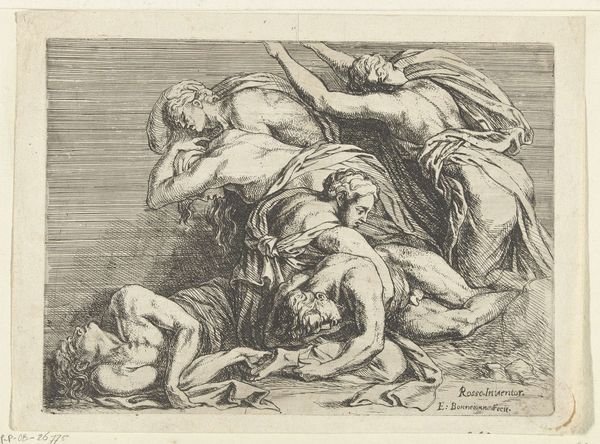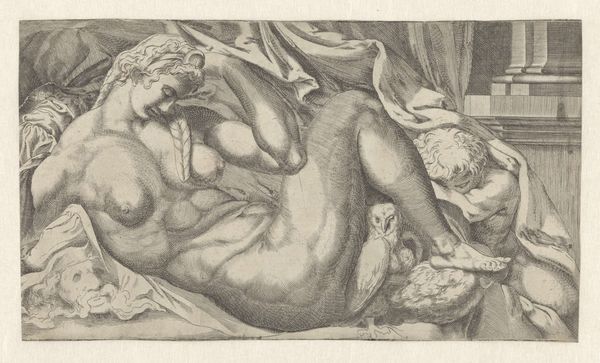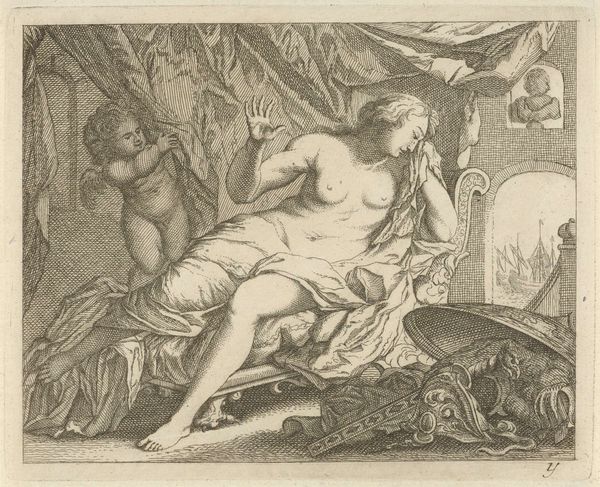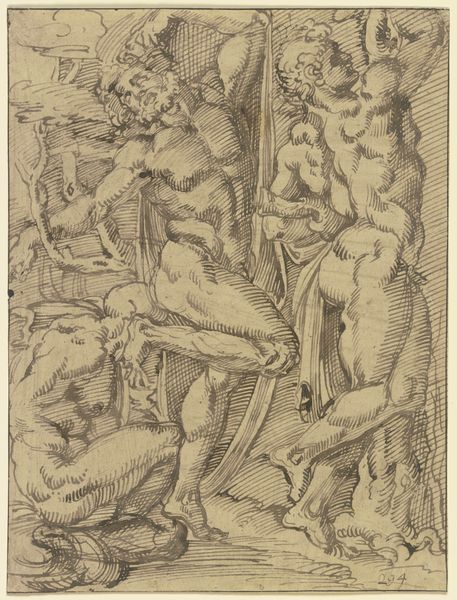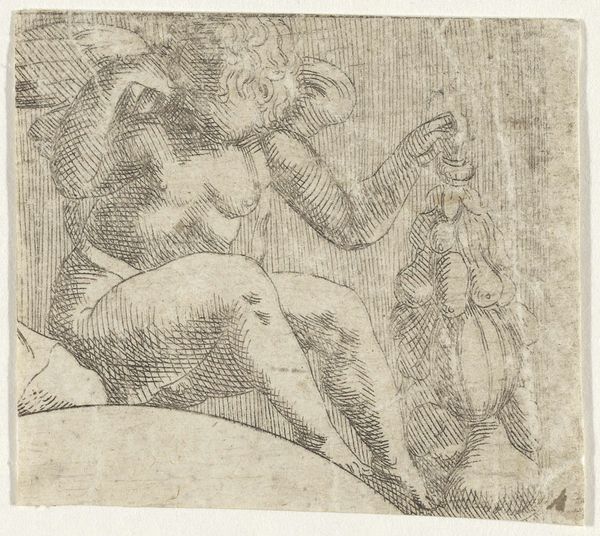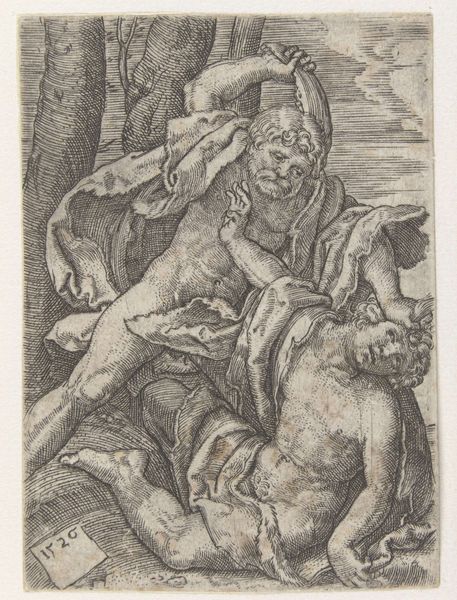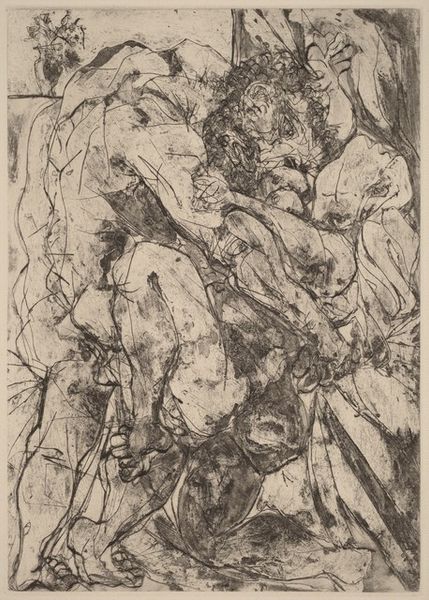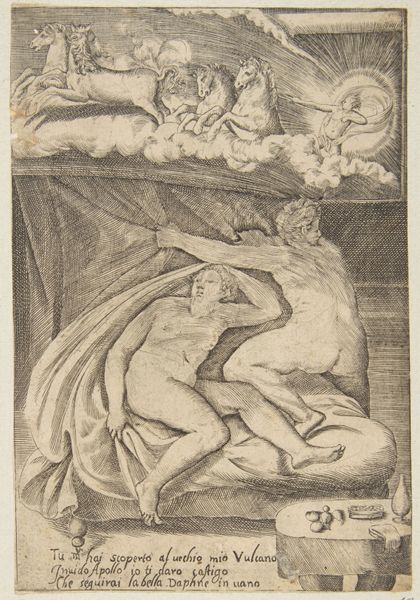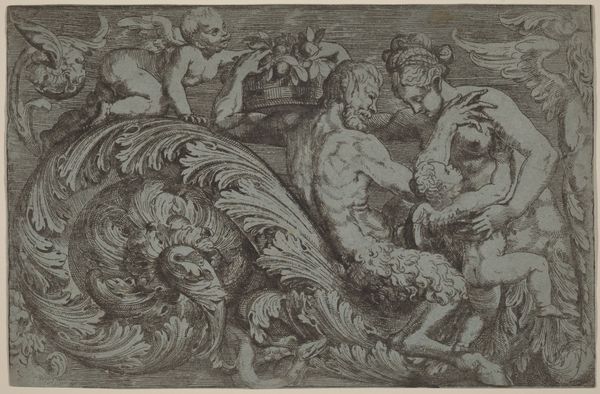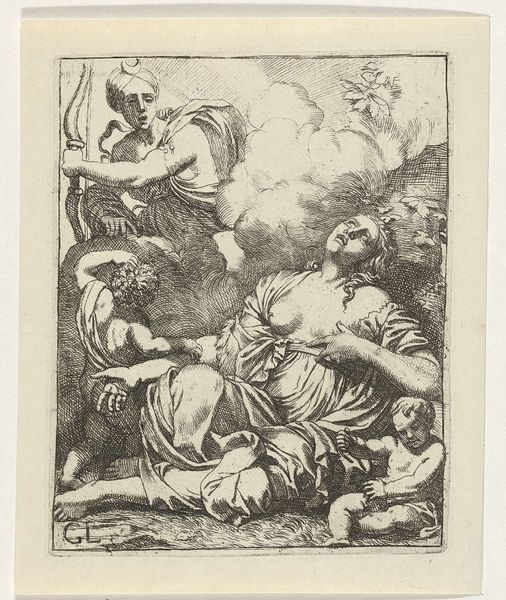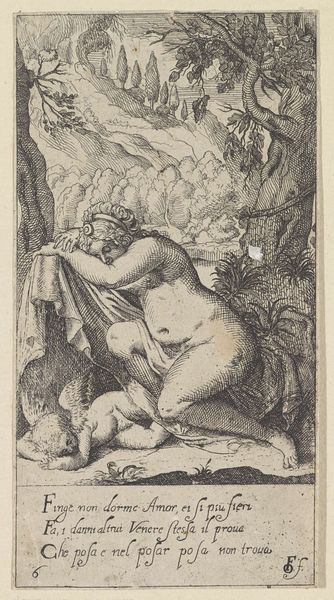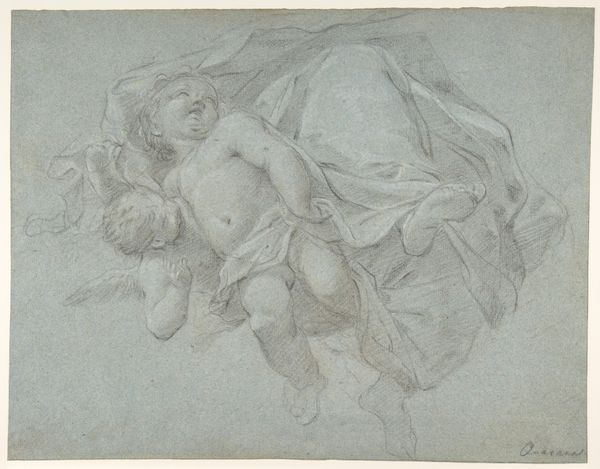
drawing, ink, engraving
#
drawing
#
pen sketch
#
pencil sketch
#
mannerism
#
figuration
#
form
#
ink
#
line
#
history-painting
#
nude
#
engraving
Dimensions: height 76 mm, width 173 mm
Copyright: Rijks Museum: Open Domain
Editor: This ink engraving from 1543, "Fragment uit Jupiter zendt de drie godinnen naar het oordeel van Paris" by Antonio Fantuzzi, has such a flurry of detailed lines forming the figures! It’s incredibly dynamic but almost overwhelmingly busy. How do you approach such a densely packed image? Curator: It's crucial to examine the printmaking process itself. Fantuzzi, working in the mid-16th century, wasn’t just illustrating a myth; he was engaging with the burgeoning print market. This engraving, as a readily reproducible item, reflects a shift in artistic consumption. Who do you think could afford this work and how would that reflect their status? Editor: Probably people who could afford to commission work. Maybe they bought these engravings as cheaper options? So, what can we infer from that social context and their act of consuming these kinds of images? Curator: Well, we can examine the material value conferred on this image through its content. The nude figures, the classical subject matter, speak to a certain level of education and access to classical texts and traditions. But equally important is considering the labor involved: the skilled hand of the engraver translating artistic ideas into reproducible form, entering into broader cultural exchange. How might viewing it as a ‘fragment’ change that perception? Editor: That’s fascinating! It makes me think about how prints democratized art but still reinforced existing social hierarchies through their content and relative cost. The materiality of ink on paper and the ability to circulate it widely were new then, shifting the art world's production methods. It's really insightful to view this as a produced object, intended to be distributed among people, rather than an exceptional one-off artwork made only for the wealthy elite. Thanks so much for sharing this view! Curator: Likewise. Looking closely at the process can change your interpretation.
Comments
No comments
Be the first to comment and join the conversation on the ultimate creative platform.
